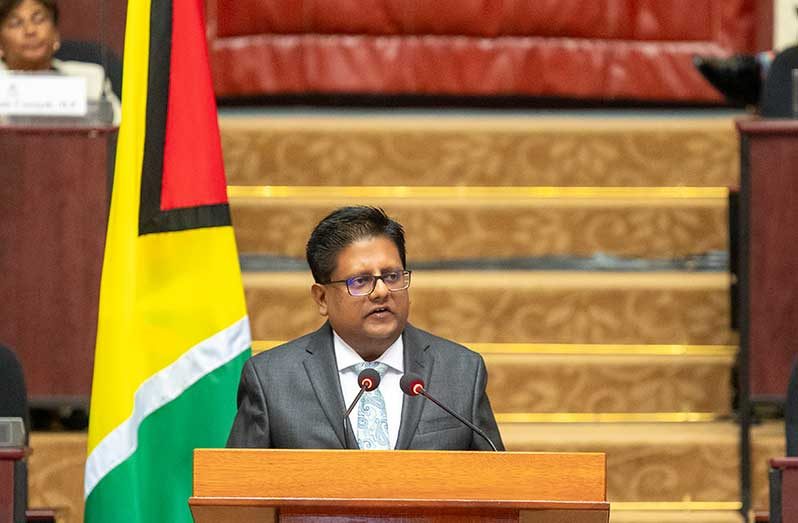–owing to prudent, sustainable management, Dr. Singh highlights
OWING to prudent management by the People’s Progressive Party/Civic (PPP/C) Government, the total Public and Publicly Guaranteed (PPG) debt-to-GDP ratio has reduced from 47.4 per cent at the end of 2020 to 24.3 per cent at the end of 2024.
This was according to Senior Minister in the Office of the President with Responsibility for Finance and the Public Service, Dr. Ashni Singh.
The Minister expounded on the positive developments in the country’s domestic economy during the 2025 budget presentation, last Friday.
He said: “Over the last four and half years, our government extended its track record of responsible management of Guyana’s public debt. Notwithstanding our transformative development agenda, debt has remained sustainable. Government remains resolutely committed to our objective of mobilising development financing within prudent cost and risk parameters.”
Against this backdrop, Dr. Singh noted that Guyana’s total public and publicly guaranteed (PPG) debt amounted to US$5.993 billion at the end of 2024, mainly on account of net inflows from external and domestic creditors.
Under the People’s National Congress (PNC), Guyana was characterised by a significant debt service burden, when the country’s debt was once nine times the size of the economy and the country was using over 100 per cent of revenue to service debt.
However, Guyana has since gained better footing and is no longer facing a crippling debt servicing crisis.
As Minister Singh put it, the current figures provide a clear indication of a marked improvement in Guyana’s capacity to maintain public debt into the future, without the need for fiscal adjustments, and places Guyana in the position of having one of the lowest debt-to-Gross Domestic Product (GDP) ratios worldwide.
“Indeed, the latest available statistics rank Guyana as having the second lowest debt-to-GDP ratio within the Western Hemisphere in 2024,” Dr. Singh firmly said.
While noting that external PPG debt at end-2024 was US$2.239 billion, the minister said that net inflows from external creditors in 2024 were mainly associated with major infrastructural works like the East Coast Demerara Road Improvement Project, the East Bank-East Coast Road Linkage Project, and the New Demerara River Bridge Project; healthcare projects like the establishment of six regional Hospitals, a Paediatric and Maternal Hospital and a new hospital complex in New Amsterdam; as well as social protection programmes and the procurement of aircraft for military use.
Further, domestic PPG debt increased from US$2.733 billion at the end of 2023 to US$3.754 billion at end of last year, primarily due to issuances of new treasury bills.
Additionally, total debt service payments increased to US$196.1 million in 2024 from US$177.5 million in 2023, underpinned by higher debt service payments to external creditors, Dr Singh said, while adding that external debt service rose to US$124.9 million from US$101.1 million, mainly the result of increased payments to bilateral and multilateral creditors.
Conversely, domestic debt service contracted to US$71.2 million in 2024 from US$76.4 million in 2023.
He said: “This decline was due to the completion of repayments under a government guaranteed bond, issued by the National Industrial and Commercial Investments Limited (NICIL) in 2018, but transferred to the books of Central Government in 2020.”
He added: “As with solvency, the liquidity position of Guyana’s public debt also strengthened in recent years. In 2020, the ratio of total public debt service-to-government revenue was 8.5 per cent. By 2024, it had fallen to 5.2 per cent, reflecting an enhanced capacity to meet debt service obligations as they come due.
“Guyana’s improved solvency and liquidity positions over the last four years exemplify Government’s commitment to debt sustainability in both the short and long-run.”



.jpg)











